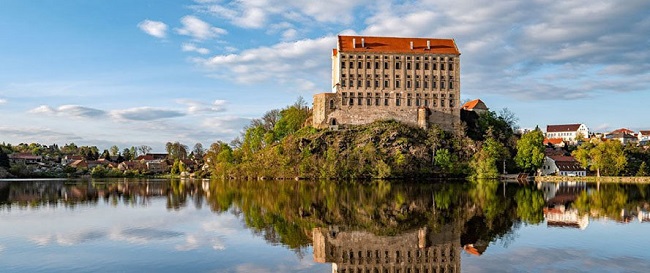
Several castles and monasteries are to become national cultural monuments
 |
Prague - The proposal of the Ministry of Culture to declare eight historical objects as national cultural monuments will be discussed by the government on Wednesday. The list mainly includes former noble residences, complemented by three monasteries. The Augustinian monastery in Brno was included in the list not only because of its architectural and art historical value but also because Gregor Johann Mendel, a naturalist and world-renowned discoverer of the theory of inheritance, worked there, marking 200 years since his birth this year.
The proposal also includes the former Augustinian monastery in Pivoni in the Domažlice region, the Augustinian monastery in Roudnice nad Labem, the Jezeří castle in the Most region, Moravský Krumlov in the Znojmo region, Rosice in the Brno region, Plumlov in the Prostějov region, and the Veveří Castle in Brno.
National cultural monuments form the most significant part of the cultural heritage of the Czech Republic and are subject to stricter protection than cultural monuments, of which there are many more. Unlike cultural monuments, which are declared by the Ministry of Culture itself, proposals for national cultural monuments must be discussed by the government.
Most recently, the government approved a set of 11 national cultural monuments in January this year; since July, the Broumov Group of Churches in the Hradec Králové Region has been granted the highest state protection as monuments. Their authors are the significant Baroque builders Kryštof Dientzenhofer and his son Kilián Ignác Dientzenhofer.
Currently, according to the website of the National Heritage Institute, over 300 national cultural monuments are recorded in the Central Register of Cultural Monuments. Among them are monuments from the oldest, such as the archaeological site of Dolní Věstonice, through medieval monuments, including Charles Bridge, the Convent of St. Agnes, Pernštejn Castle, and a group of Gothic sculptures from the beautiful style period, to modern monuments like the Tugendhat Villa in Brno or the wastewater treatment plant in Bubenč, and up to monuments from the late 20th century, including the hotel and television transmitter on Ještěd near Liberec.
Most national cultural monuments are immovable properties; only 26 are movable. In addition to the Crown Jewels and the relics cabinet of St. Maurus, they include the M 290.001 Slovenská strela railway motor coach. Its rescue received this week the Patrimonium pro futuro award from the National Heritage Institute for the best achievements in heritage care. The vehicle, from 1936 and the only example of its kind, is a combination of a unique drive system based on electromechanical power transmission, an aerodynamic body, and the overall technical solution by the main designer Hans Ledwinka.
The English translation is powered by AI tool. Switch to Czech to view the original text source.
0 comments
add comment












